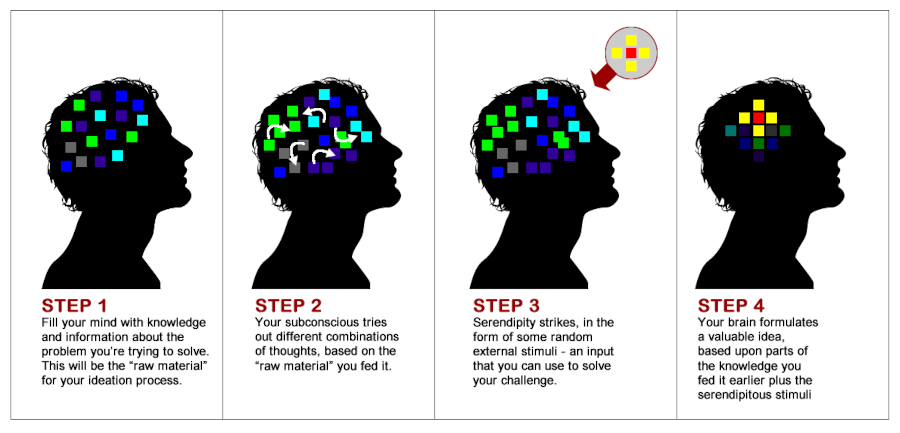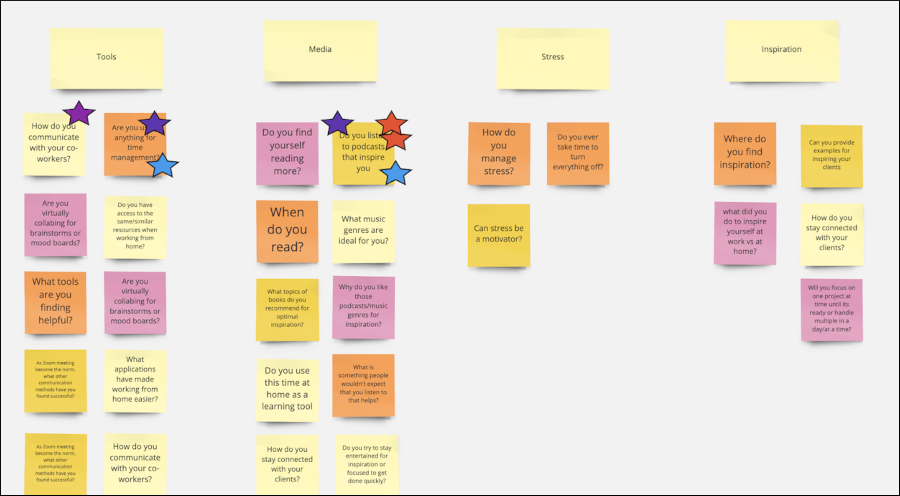
Can visual thinking tools help you generate more opportunities for serendipity – and assist you in leveraging them when they occur? The answer is a resounding yes, in my opinion.
To understand why, we must first define what serendipity is and understand its key elements. Christian Busch, in his excellent book, The Serendipity Mindset: The Art & Science of Creating Good Luck, calls it “chance interacting with human action, leading to a usually positive outcome.”

Most of us understand that serendipity occurs when something unusual happens to us. But we must also decide what it means and if it’s something we can use. That’s the part that most people struggle with. According to Busch, we tend to miss most opportunities for serendipity because we don’t even recognize them:
“An unprepared mind discards unusual encounters, and often overlooks serendipity,” he maintains.
As the world careens toward greater uncertainty, Busch points out that the ability to cope with and take advantage of the unexpected is becoming more important than ever. It’s essential if we want to accomplish something extraordinary, to make an impact on the world.
To take advantage of serendipity, we need to attune our minds to these unexpected events — to cultivate our ability to recognize them when they present themselves. Being able to recognize an unexpected event in our lives is only the beginning of serendipity, however. We need to be able to connect it to something else — seeing a new pattern, connecting the dots – and take action on it.
The role of tools in serendipity
Busch not only believes that serendipity happens more frequently than most people realize, but that we can engineer the conditions where it’s more likely to occur.
One of our challenges in recognizing and leveraging it is what Busch calls our “functional fixedness,” our tendency to think in habitual ways and use the tools at our disposal in the same limited way. To get out of this rut, we must cultivate new ways of thinking and working.
“People usually display the highest degree of creativity when they use problem-solving approaches that they do not routinely use,” he says. Entertaining multiple models of thinking can increases our odds of coming up with a truly novel solution.
“We can also increase our odds of success if we act like a scientist and conduct numerous experiments, or like Sherlock Holmes, collecting as much data and evidence as possible and then looking for the patterns within it,” he points out.
He describes the idea of a “serendipity field,” a place where we can collect and analyze “all the dots that could potentially be connected by ourselves or by others.”
Sound familiar?
How can visual thinking tools help?
I believe that visual thinking tools can be instrumental in helping us to recognize and take advantage of opportunities for serendipity. Here’s why:
An unlimited, flexible canvas: Mind mapping, concept mapping, visual note-taking and visual collaboration tools all utilize an unlimited canvas workspace where we can capture a large quantity of ideas. Each one is a “dot” or object that can be manipulated with a high degree of flexibility. This is the “serendipity field” Busch described where we can discover new connections.
Refactoring: Visual thinking tools enable us to refactor ideas – to move them around and in so doing, change their relationship to the other ideas around them. This capability enables us to see patterns and connections that we weren’t aware of before. This can be quite powerful!

Thought experiments: Visual thinking tools offer unlimited freedom to capture many types of facts, information and ideas, and to play Sherlock Holmes with them – testing assumptions and running thought experiments on them. In the process, it can not only help us with the “A-ha!” part of serendipity, where we first recognize a potential connection, but also i interpreting what it could mean to us.
For example, imagine creating a mind map with two branches. On the first one, you summarize the the serendipitous connection you’ve discovered. On the second one, you explore what it could potentially mean to you. You can then explore several possible interpretations of it, each on a separate sub-branch.
Conclusion
As you can see, visual thinking tools represent a fertile serendipity field, an environment where serendipity is more likely to occur.
Openness to the unexpected is key to being lucky—and to experiencing serendipity. As you use your visual thinking tool of choice to capture ideas, solve problems and formulate plans, keep an eye out for opportunities for serendipity. Chances are, they’re lurking closer than you think! As Busch emphasizes, we start seeing the unexpected more frequently when we EXPECT to see it.
Happy idea hunting!



Leave a Reply